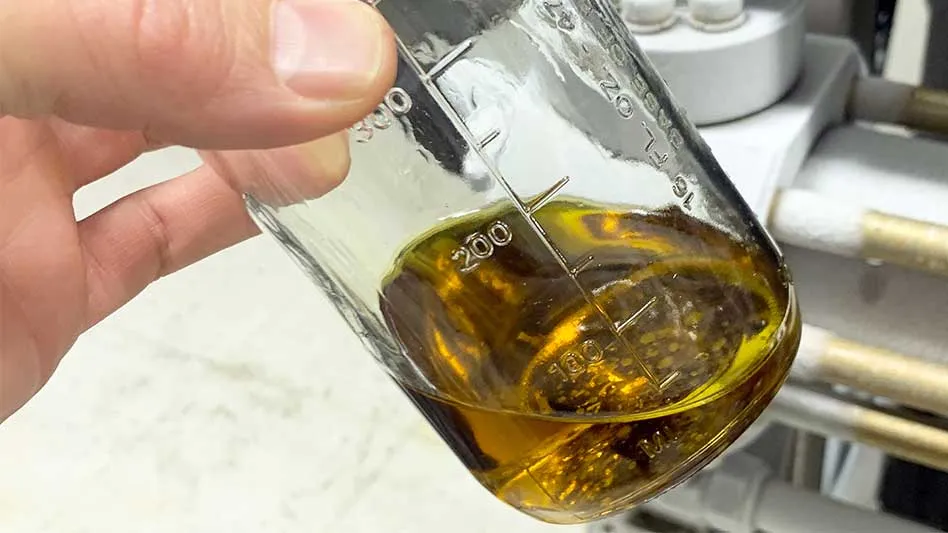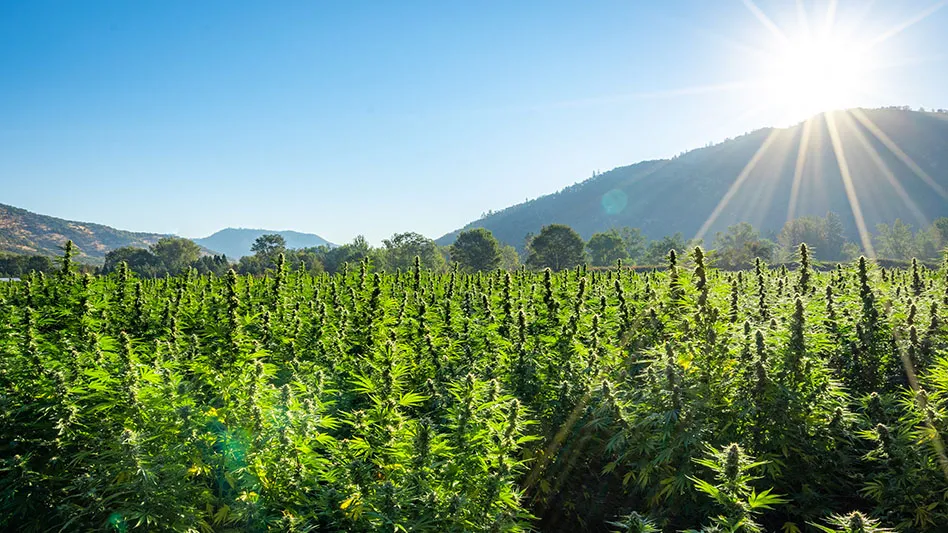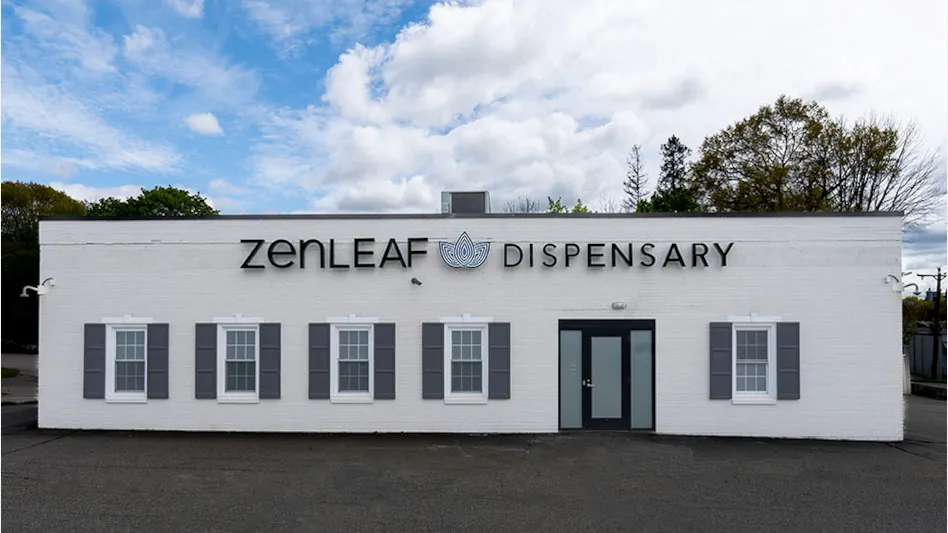
Courtesy of Vitalis Extraction Technology
In most cannabis markets, both in the U.S. and Canada, flower prices remain suppressed as production outpaces demand. According to Cannabis Benchmarks’ March 17, 2023, U.S. Cannabis Spot Index report, average wholesale flower price dipped by more than 15% from the same period in 2022, dropping from $1,215 to $1,025 per pound.
The margins were even thinner for greenhouse and outdoor cultivators, who could expect an average of $654 and $464 per pound, respectively.
This dynamic compels wholesalers to compromise on margins (something most have already done and are incapable of further committing to without serious solvency issues) or find ways to maximize the value of that biomass. “For any cultivator that's purely just doing flower at the moment, if you want to increase your margin, then value-added products are where you want to go,” says Kiran Dayaram, research and development manager at Kelowna, British Columbia-based Vitalis Extraction Technology.
While many cultivators might be enticed by margins on products like cannabis edibles and drinks, “the investment to get to that level is above that of extraction,” Dayaram says. “Extracts are the lowest hanging fruit.”
Discovering Co-Solvent Extraction
As an extraction equipment manufacturer, Vitalis felt firsthand the consequences of an oversupplied market. In 2019, the “bottom fell out of the market, particularly in Canada,” Dayaram recalls, which forced many companies to capitulate or scramble for a path forward. “Operators really started asking, ‘How can we get better, greater efficiencies? How can we get more bang for our buck?’”
Vitalis had been developing a co-solvent extraction system combining CO2 and small amounts of ethanol, “typically between 5% and 10% ethanol by mass in the CO2 system” Dayaram says (1 kilogram of CO2 per minute only requires up to 100 milliliters of ethanol per minute). The experiments proved fruitful. “What the co-solvent allowed us to do was to take what would typically be a five- to eight-hour extraction and turn it into a 60- to 120-minute extraction,” increasing the amount of biomass a producer could process in a day by a factor of up to four.
Not only did the co-solvent system reduce extraction time, it also increased efficiency and reduced waste compared to single-solvent CO2 systems. When only using CO2, recovering 80% of the cannabinoids from the biomass takes an average of four hours, Dayaram explains, but achieving 90% to 95% recovery could take an additional four hours. These diminishing returns force processors to waste still viable biomass to get the next batch processed in time.
“When we switched to the co-solvent, what we found is we can very easily achieve 95% recovery of cannabinoids,” Dayaram says. There was also the added benefit of being able to customize the cannabinoid recovery ratio by adjusting the ethanol flow rate based on the biomass potency, pack density, and type (ground or whole flower).
Because the co-solvent extraction runs at colder temperatures and the CO2 used is in a liquid rather than supercritical state, the system can run at much lower pressures, extending equipment longevity and reducing maintenance costs of the system. “When you're running supercritical–high pressure, high temperature–you're running the system at the top end of its capabilities,” which reduces system efficiency, Dayaram notes. In addition to being more efficient, running at colder temperatures and lower pressure results in a higher quality crude, with fewer impurities and wax than typically associated with CO2 extraction.
Reducing Operational Costs
Co-solvent CO2 systems do not require the CO2 to be run at high pressures, meaning the system requires less physical steel to contain the pressurized solvent, greatly reducing the system cost compared to standalone CO2 systems.
Additionally, because the CO2 diffuses the ethanol, only a fraction of the solvent used in an ethanol-only extraction system is needed in a co-solvent system, Dayaram explains. This helps businesses avoid the need to store large amounts of solvents on-site, reducing both facility design and construction costs (storing large amounts of solvents requires specially rated rooms) and operational costs.
For example, 65 pounds of biomass will require approximately 100 liters of ethanol in a single-solvent cryo-ethanol system. “We’re down to about 25 liters of ethanol” for the same amount of biomass, Dayaram says.
The cannabinoid solution throughput from that 25 liters of ethanol “comes out in a ratio that can go now straight into winterization. We don't need to do any extra dilution with ethanol–[the solution] can go straight into your freezer or whatever you have for your winterization. Because you're using less ethanol, now you have less to evaporate and you have more space in your freezer,” saving processors the cost of bigger freezers and the corresponding higher utility bills.
To further reduce operating costs, the cannabinoid solution is ready for automated refinement, which allows processors to move away from cumbersome, manual, inefficient conventional winterization.
Versatile Production Output
With co-solvent systems, processors can produce a variety of extracted cannabis products using a single system. “The beauty of having the co-solvent system is we still retained all our CO2 capabilities, and we augmented it with a co-solvent” like ethanol, Dayaram says.
Companies looking to make terpene-rich extracts like sauces can run a low-pressure, low-temperature liquid CO2 run to strip and collect terpenes before increasing the pressure and introducing a bit of ethanol to strip away the cannabinoids. Doing so only adds between 15 to 30 minutes to the extraction time, Dayaram notes. “You definitely do have a lot more flexibility in terms of what you can do with the product.”
By adjusting pressures and temperatures on the CO2 system, processors can make highly fragrant, vaporizer-friendly oils and dabbable products like budders, shatters, and crumbles. The co-solvent extract “is perfect for making distillate and isolate,” Dayaram says. This versatility allows companies to quickly pivot to meet market needs. “A trend I see in the market is manufacturers aiming to make isolate, and then using isolate to formulate whatever products [the market needs].
“If you wanted to make distillate, you can take your isolate, mix it with some terps, and now you've got your distillate,” Dayaram continues. “Or, if you want to make diamonds, you take your distillate and you re-dissolve it in solvent and then recrystallize it.”
By first turning the biomass into isolate, processors can also extend the shelf life of their cannabinoids, while not completely forgoing later refinement steps, again allowing them to maximize the ROI on their biomass. “Isolate keeps for a long time if you store it properly, whereas distillate and flower have much shorter shelf lives,” Dayaram says.
With cheaper upfront costs compared to single-solvent CO2 systems, increased terpene preservation compared to ethanol extraction units, and a higher throughput that still allows processors to quickly pivot and create a variety of cannabis extracts, co-solvent extraction systems can prove to be a valuable tool in highly competitive markets.
Latest from Cannabis Business Times
- South Dakota Group Submits 29K Signatures for 2024 Adult-Use Cannabis Legalization Measure
- Rescheduling Would Have Saved Verano $80M in 2023 Tax Payments, CEO Says
- Aurora Marks 1st Medical Cannabis Shipment to New Zealand Market
- Where All 100 US Senators Stand on SAFER Banking Act
- Blumenauer Unveils Legislative Blueprint, Additional Administrative Action Needed Following Rescheduling
- Cannabis Rescheduling FAQ: What Now?
- From Custodian to Cultivation Supervisor
- California City in Cannabis Retail Desert Welcomes 1st Dispensary





